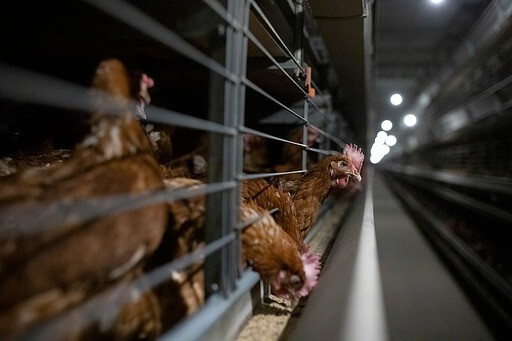Animal Welfare
@tags:: #lit✍/📰️article/highlights
@links:: animal advocacy, animal welfare, cause profile,
@ref:: Animal Welfare
@author:: Probably Good
=this.file.name

Reference
=this.ref
Notes
The scale of farmed animal welfare is even larger – 75 billion land animals are slaughtered each year for food, as well as well over 1 trillion fish, if we count both wild and farmed fish. The conditions for the vast majority of these animals are miserable. Over 90% of the world’s farmed animals are kept in factory farms, where animals spend their entire lives in intensely crowded and uncomfortable conditions and endure various inhumane practices.
- View Highlight
- factory farming, factory farming scale, anki,
For example, chickens – about 26 billion of which exist at any given time (that’s more than three chickens for every person on the planet) – are often debeaked as chicks. This is done without anesthesia, and is thought to cause lifelong pain. Additionally, egg-laying hens are commonly kept in cramped battery cages so small that they’re unable to spread their wings. Likewise, female pigs are often isolated in tight “farrowing crates,” where they’re unable to walk or even turn around. And of the 200 million land animals who are slaughtered every day, many are killed without being adequately stunned first, meaning they undergo their slaughter fully conscious.
- View Highlight
-
Relatively little money is given for animal welfare compared to causes that help humans. For example, less than 3% of US charitable giving goes to helping animals. And, within these donations, only a tiny fraction (less than 1% goes to specifically helping farmed animals, which is vastly disproportionate to the scale of their suffering.

Courtesy of Animal Charity Evaluators. This graph is based on 2016 statistics, though we expect it would look very similar with up-to-date numbers.)
- View Highlight
-
In a sense, wild animals also receive a fair amount of funding; the World Wildlife Foundation has a budget of over $300 million – this alone is 50% more than the estimated $200 million spent on the entirety of farmed animal advocacy. However, this money tends to be spent on conservation efforts, rather than specifically improving wellbeing. Though this is valuable work, it does mean there likely isn’t much funding going to directly improving the welfare of wild animals.
- View Highlight
- wild animal welfare, conservatism, animal advocacy funding,
In general, we expect that interventions in both farmed and wild animal welfare will help more animals than interventions targeted at companion animals. For example, it costs animal shelters hundreds of dollars to provide a year’s care for a dog in a shelter, but helping farmed animals is far more cost effective; one estimate suggests that 250 hens have been saved from battery cages per dollar spent on corporate advocacy campaigns.
- View Highlight
- animal advocacy strategy,
dg-publish: true
created: 2024-07-01
modified: 2024-07-01
title: Animal Welfare
source: reader
@tags:: #lit✍/📰️article/highlights
@links:: animal advocacy, animal welfare, cause profile,
@ref:: Animal Welfare
@author:: Probably Good
=this.file.name

Reference
=this.ref
Notes
The scale of farmed animal welfare is even larger – 75 billion land animals are slaughtered each year for food, as well as well over 1 trillion fish, if we count both wild and farmed fish. The conditions for the vast majority of these animals are miserable. Over 90% of the world’s farmed animals are kept in factory farms, where animals spend their entire lives in intensely crowded and uncomfortable conditions and endure various inhumane practices.
- View Highlight
- factory farming, factory farming scale, anki,
For example, chickens – about 26 billion of which exist at any given time (that’s more than three chickens for every person on the planet) – are often debeaked as chicks. This is done without anesthesia, and is thought to cause lifelong pain. Additionally, egg-laying hens are commonly kept in cramped battery cages so small that they’re unable to spread their wings. Likewise, female pigs are often isolated in tight “farrowing crates,” where they’re unable to walk or even turn around. And of the 200 million land animals who are slaughtered every day, many are killed without being adequately stunned first, meaning they undergo their slaughter fully conscious.
- View Highlight
-
Relatively little money is given for animal welfare compared to causes that help humans. For example, less than 3% of US charitable giving goes to helping animals. And, within these donations, only a tiny fraction (less than 1% goes to specifically helping farmed animals, which is vastly disproportionate to the scale of their suffering.

Courtesy of Animal Charity Evaluators. This graph is based on 2016 statistics, though we expect it would look very similar with up-to-date numbers.)
- View Highlight
-
In a sense, wild animals also receive a fair amount of funding; the World Wildlife Foundation has a budget of over $300 million – this alone is 50% more than the estimated $200 million spent on the entirety of farmed animal advocacy. However, this money tends to be spent on conservation efforts, rather than specifically improving wellbeing. Though this is valuable work, it does mean there likely isn’t much funding going to directly improving the welfare of wild animals.
- View Highlight
- wild animal welfare, conservatism, animal advocacy funding,
In general, we expect that interventions in both farmed and wild animal welfare will help more animals than interventions targeted at companion animals. For example, it costs animal shelters hundreds of dollars to provide a year’s care for a dog in a shelter, but helping farmed animals is far more cost effective; one estimate suggests that 250 hens have been saved from battery cages per dollar spent on corporate advocacy campaigns.
- View Highlight
- animal advocacy strategy,